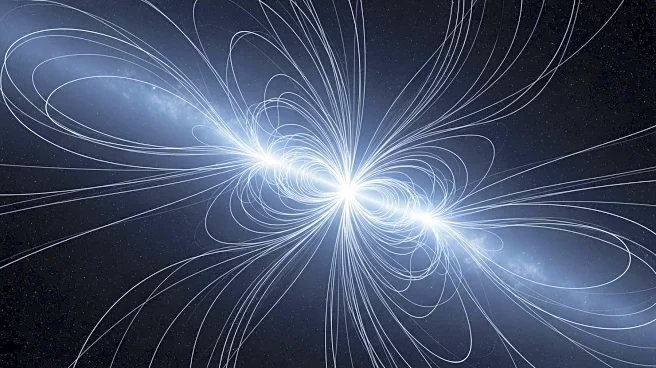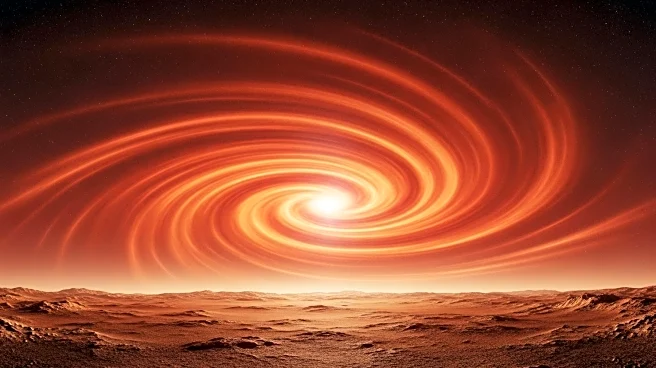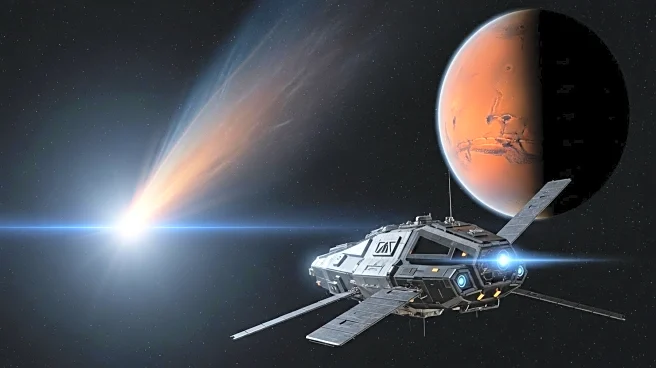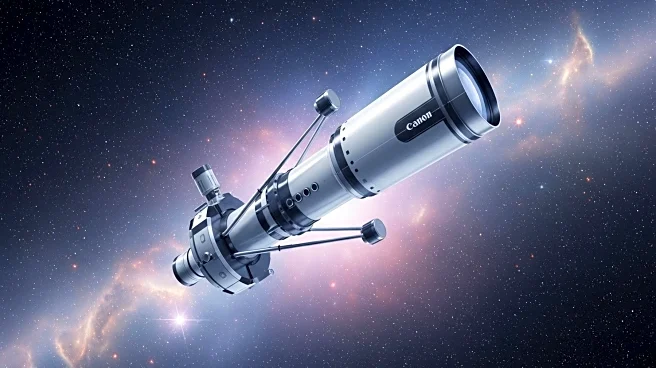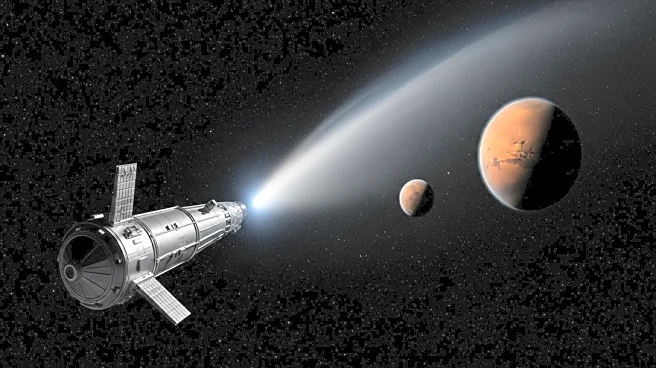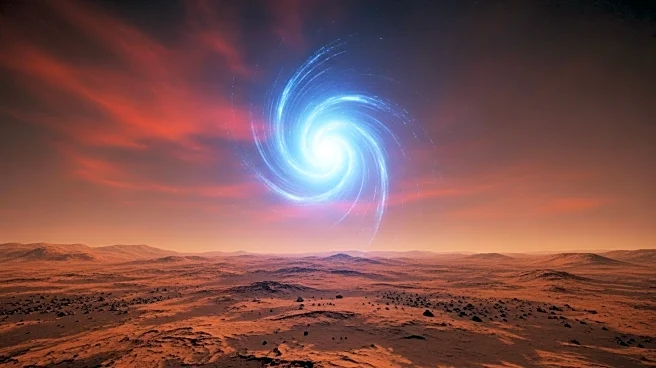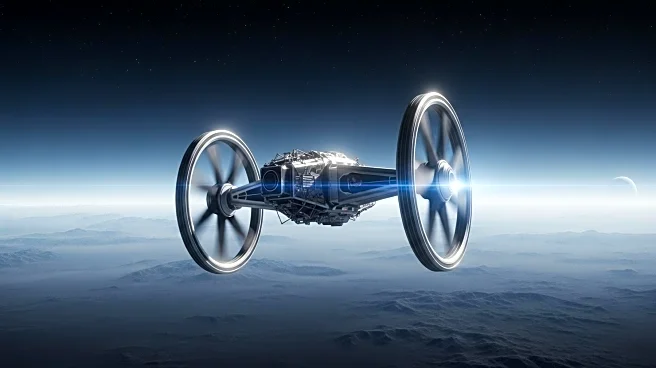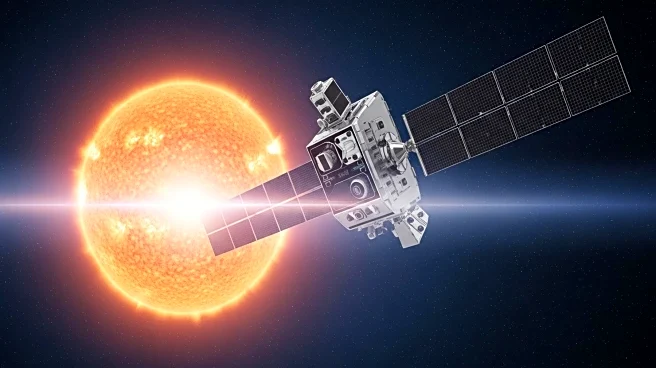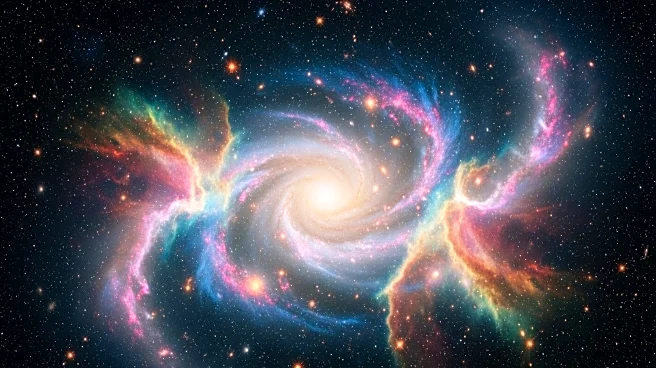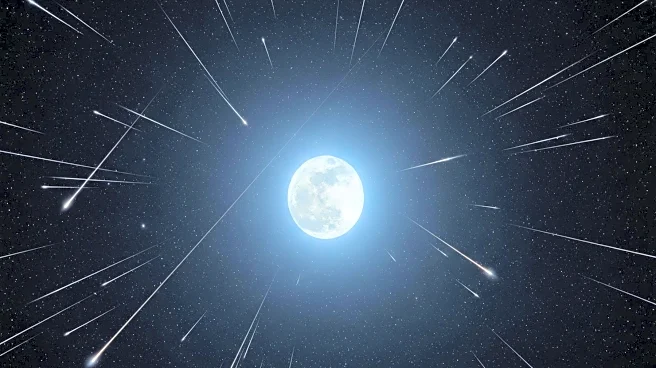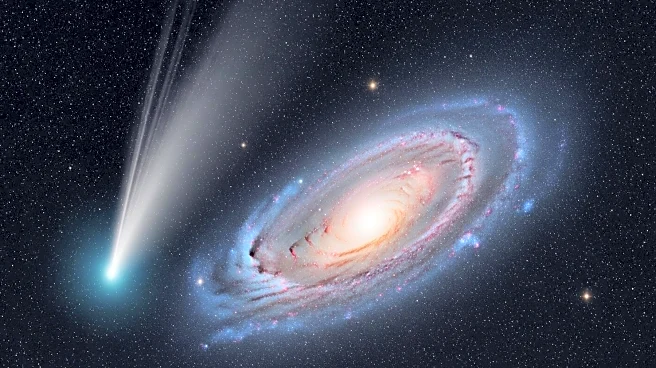What is the story about?
What's Happening?
NASA's Magnetospheric Multiscale mission has detected a magnetic 'switchback' near Earth for the first time. This phenomenon, previously observed in the sun's outer atmosphere by the Parker Solar Probe, involves kinks in magnetic field lines formed through magnetic reconnection. Researchers E. O. McDougall and M. R. Argall identified a switchback-shaped structure in Earth's magnetosphere, suggesting that such formations can occur near planets. The discovery was made by analyzing data from four Earth-orbiting satellites studying Earth's magnetic field. The switchback consisted of plasma from both Earth's magnetic field and the solar wind, which constantly emits plasma at supersonic speeds. The findings indicate that switchbacks can form where the solar wind collides with a planetary magnetic field, potentially triggering geomagnetic storms and auroras.
Why It's Important?
The detection of magnetic switchbacks near Earth has significant implications for understanding space weather. These formations can lead to geomagnetic storms, which may disrupt satellite communications, navigation systems, and power grids. By studying switchbacks closer to home, scientists can gain insights into their behavior without needing to send probes into the sun's corona. This research could improve predictions of space weather events, enhancing preparedness and mitigation strategies for industries reliant on satellite technology and electrical infrastructure.
What's Next?
Further research is needed to understand the mechanisms behind switchback formation and their impact on Earth's magnetosphere. Scientists may focus on developing models to predict when and where switchbacks might occur, potentially leading to better forecasting of space weather events. Collaboration between space agencies and research institutions could advance the study of magnetic reconnection and its effects on planetary environments.
Beyond the Headlines
The study of magnetic switchbacks may also contribute to broader scientific understanding of magnetic fields and plasma interactions in space. Insights gained from this research could inform future missions exploring other planets and their magnetic environments, potentially revealing new aspects of planetary science and astrophysics.
AI Generated Content
Do you find this article useful?
